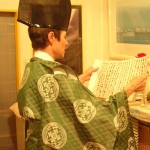 Green Shinto is privileged to carry this piece by Pat Ormsby, a licensed priest with Kompira Shrine. Resident in the environs of Mt Fuji, she has written previously about the Seven Sacred Trails up the mountain. She also has a unique insight as a foreigner into the Fuji-ko sect rituals, which she attends, and in the piece below she writes of one of the earliest leaders of the sect, Jikigyo Miroku (1671-1733).
Green Shinto is privileged to carry this piece by Pat Ormsby, a licensed priest with Kompira Shrine. Resident in the environs of Mt Fuji, she has written previously about the Seven Sacred Trails up the mountain. She also has a unique insight as a foreigner into the Fuji-ko sect rituals, which she attends, and in the piece below she writes of one of the earliest leaders of the sect, Jikigyo Miroku (1671-1733).
(For an interview with Pat Ormsby, please click here.)
*****************************************************************************
The Self-Sacrifice of Jikigyo Miroku
By Patricia Ormsby, in memoriam of Michael C. Ruppert
Background
Confucianism is a philosophical tradition that has had a major impact throughout the Orient. According to one expert, Royall Tyler, “The essential character of what I call here a ‘Confucian mode of thought’ is an absorbing religious or philosophical concern with achieving, and more particularly, with maintaining a stable and harmonious society. It goes without saying that Confucianism has an essential ethical dimension and that it has much to say about self-cultivation…” (1)
The major concerns of the medieval period in Japan (1185-1600), a time of constant warring, had to do less with that than with suffering, passions and enlightenment, which Buddhism addressed. During the prosperous Tokugawa reign (Edo Period, 1600-1860s), however, Buddhism took a backseat to new religions, with three historical figures of note, Suzuki Shosan, an unorthodox Zen master; Hasegawa Kakugyo, founder of the Mt. Fuji faith; and Jikigyo Miroku, a popular leader of the 1700s who turned the Fuji faith into a major movement, the Fuji Confraternity.
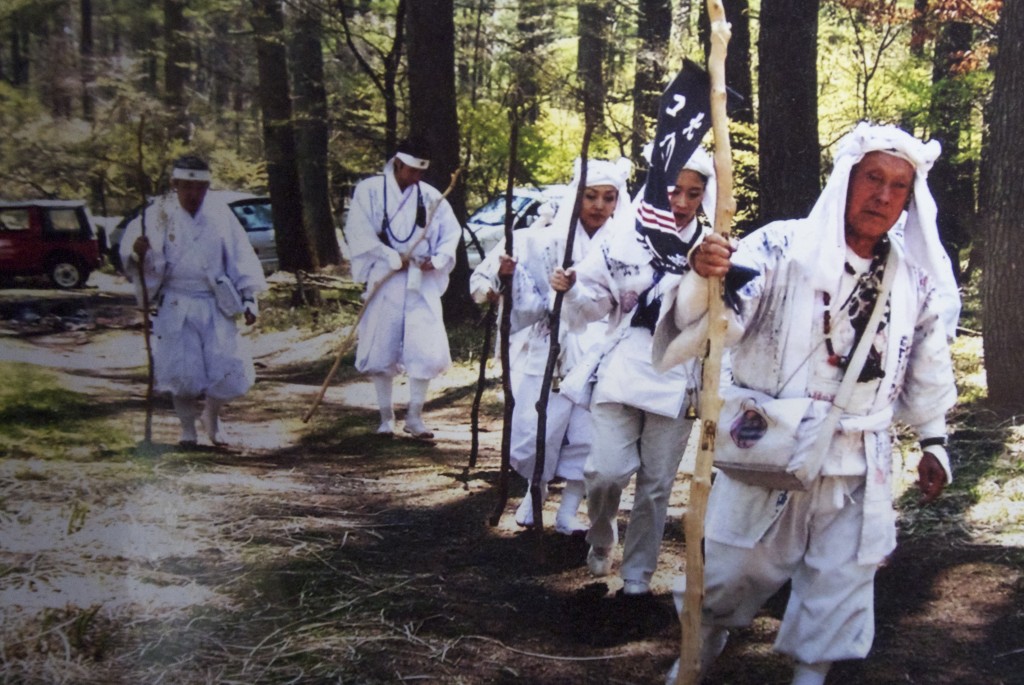
A photo of Fuji Confraternity members from the early twentieth century (exhibited in the Togawa Oshi house)
The Fuji Confraternity
The Fuji Confraternity incorporated elements of nature worship (i.e., folk Shinto), Buddhism, Confucianism and Taoism, and also bore some influences from Christianity, which had recently been popular and then was banned in Japan. Having finally achieved peace, the people of Japan wanted to ensure its stability and a time of prosperity for all, much like the Christian concept of the “millennium” after a time of terrific traumas and a major die-off, but they associated this not directly with the outlawed Christianity, but with the Buddhist concept of the Maitreya bodhisattva (Miroku in Japanese), a future Buddha who it is said will appear at a time when all Dharma has been forgotten, and will bring about a period of enlightenment. (2)
Jikigyo’s Life
On Jikigyo Miroku, the Encyclopedia of Shinto (3) explains,
“His lay name was Ito Ihei, and he was born to a peasant family [in 1671 near Ise]. He moved to Edo [now Tokyo] at the age of thirteen, where he worked at a kimono fabric shop. A hometown compatriot introduced him to the cult of Mount Fuji, known as Fuji Shinko, and in 1687 he took the religious name of Jikigyo [meaning “fasting practice”]. The following year he made a pilgrimage to the summit of Mount Fuji, where he experienced an eschatological revelation that the “renewal of the world of Maitreya” (Jp. Miroku) was beginning.
In 1717 Jikigyo became the sixth leader of the Fujiko confraternity and in 1722 added the appellation Miroku to his religious title. In addition to his business activities, he conducted an aggressive proselytizing campaign, appealing to all potential converts, regardless of who they were…Jikigyo’s distinguishing hallmark was [his] focus on interior faith.”
Jikigyo prophesized that he would die on Mt. Fuji at age 68. To put his life and faith in perspective, commoners were not allowed to travel freely across Japan during the Edo Period. Only religious pilgrimage was allowed. The cost of that, however, was equal to a farmer’s annual income. (4)
Even now, when travel has become nearly prosaic, we can still relate to it as a life-altering experience, giving new insights and inspirations. The word “cult” has been used a lot in reference to the Fuji Confraternity. Because of its popularity, the authorities considered it a potential threat, and they tried banning certain of its practices. More than once its leaders were interrogated on suspicion of Christianity. The followers, however, found ways to observe the letter of the law while fulfilling their need for spiritual sustenance.
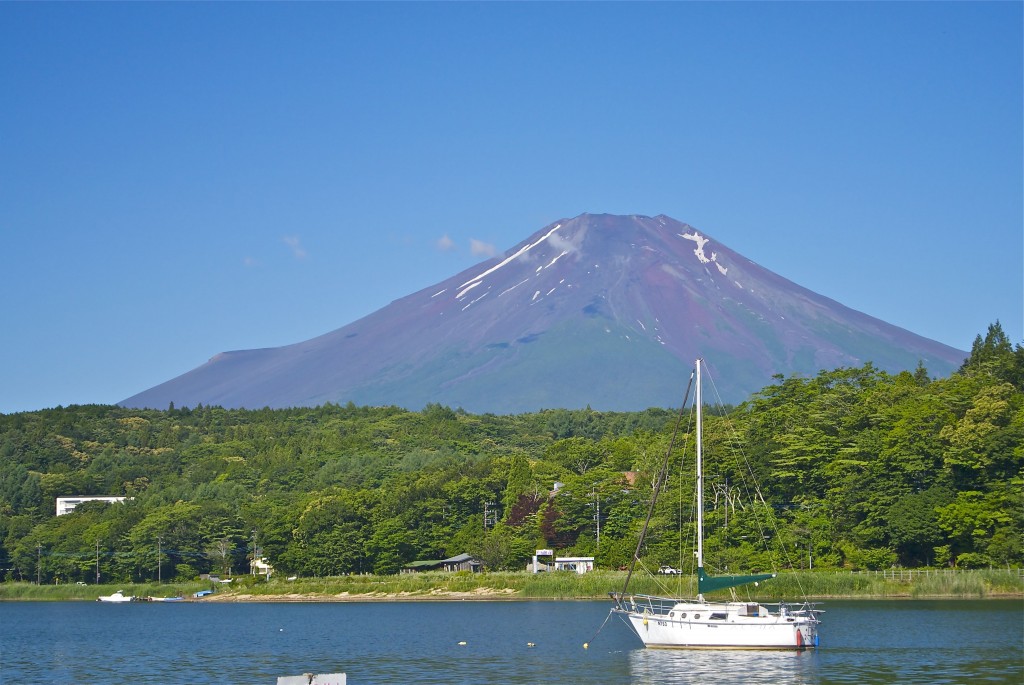
For Fuji-ko members, the foot of the volcano represented this world and the rarefied air of the summit enlightenment.
Mount Fuji
To Shugendo pilgrims (Buddhism combined with Shinto, of which the Fuji faith continues to be one part) the plains and villages at the foot of Mt. Fuji represented this world, of mundane concerns; the deep, dark mossy forests on black lava fields of its middle reaches, the transition—perhaps death; and the bare slopes, rarefied air and fabulous views from the summit, enlightenment.
Tyler (1) again:
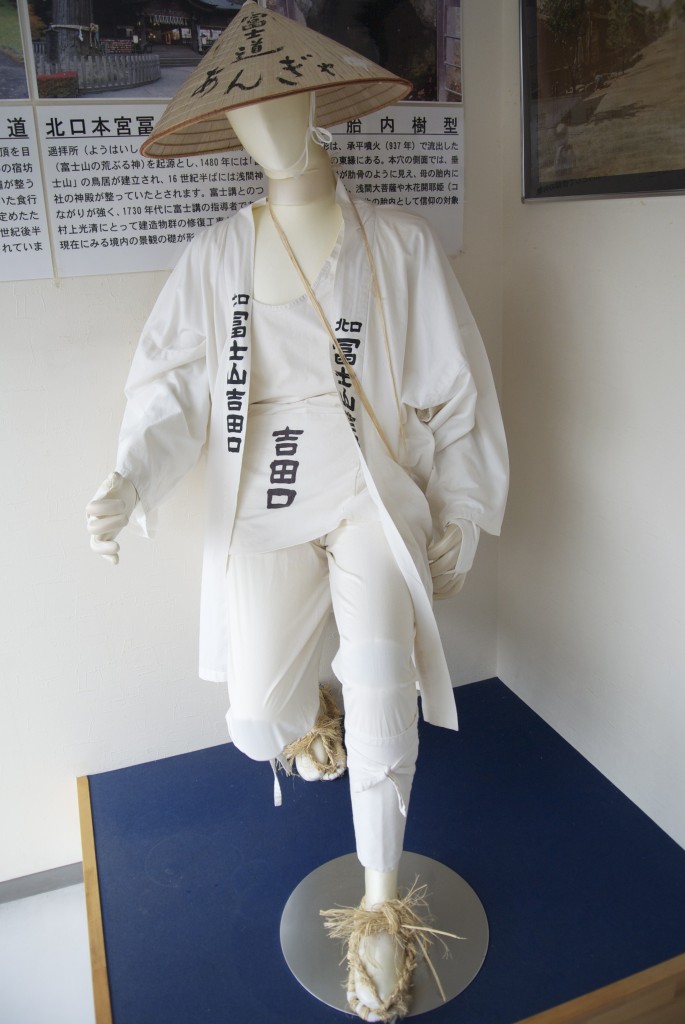
Pilgrimage costume of the Fuj-ko Confraternity
“Jikigyo, as he admitted, had no learning whatsoever. Certain writings of his are nonetheless revered in the Fuji cult, though the only one published is entitled Sanjuichinichi no maki [31-Days’ Scroll]. This document contains Jikigyo’s last teaching. Perhaps it was transcribed from Jikigyo’s oral instruction by a disciple, it is not as badly written as Jikigyo’s letters, but the Fuji cult was assuredly not a literary movement.
…
“Jikigyo’s spelling of the name Miroku (which he received, spelling and all, from Sengen [goddess of Mt. Fuji]) is highly significant. Mi means oneself, or myself, but it also means mibun, or one’s station in life. Roku, the word for a samurai’s stipend, is the material largess which one receives from above, from a lord, from heaven, or, as in this case, from Sengen. It is also a pun on roku, flat, or straight. Thus the name Miroku evokes a plenty to be enjoyed in average life by the average, but true and honest man.
…
“Jikigyo was assiduous in the cult and never missed the regular annual ascent of Fuji. Indeed, it is recorded that when he and his ko [fraternity] lodged at the Yoshida-guchi (on the north side of the mountain), he performed his devotions so loudly and late into the night that his fellow ko members were unable to sleep. At last they complained to the oshi (guide) [in essence, ‘travel agent’] in charge of their quarters. When Jikigyo refused to desist, he was expelled from the building. Unfortunately, his reputation was such that no other oshi would have him. Only one Tanabe Juroemon was at last willing to take him in. This Tanabe became an important disciple and attended Jikigyo during his last days.
By the time of this incident, Jikigyo had probably already done the inevitable: he had given away all of his personal wealth to the clerks and manager of his business.
The Age of Miroku
Jikigyo announced the coming of the Age of Miroku. He traveled and everywhere saw evidence of misrule and injustice. He continued to have visions from Sengen, who instructed him to advance his plan by five years. That plan was to “achieve perfect union with Sengen by fasting to death on the summit of Mt. Fuji.” (1)
He had a portable shrine about three feet high made and transported in from Edo, and he sat in this shrine as he fasted. Only he was not allowed to sit at the summit of Mt. Fuji. True to the authoritarian nature of the time, the Sengen Shrine, which had jurisdiction over the summit forbade him to do so at the last minute.
He nonetheless fulfilled his vow to help all sentient beings at a crag called Eboshi-iwa, a few hundred meters down from the summit on the north slope. He drank only one cup of snow water each day, possessed almost continuously by Sengen. Tanabe Juroemon, who was assisting him, transcribed his messages. On the 30th day, he said, “Well, now I am going home.” He recited the litanies of Fuji and closed his eyes. Tanabe wept, closed the doors of the shrine, heaped rocks over it and descended.
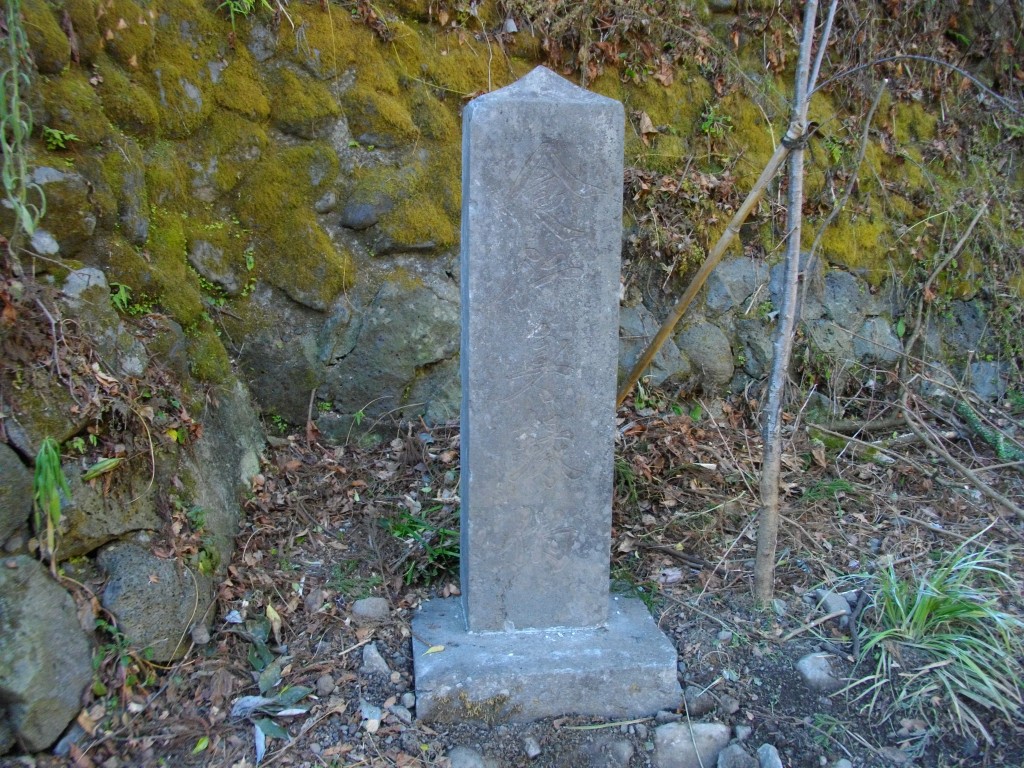
Monument of Jikigyo Miroku near Shiraito_Falls (Wikicommons)
Jikigyo’s Death and Teachings
His death was a sensation. The tabloids of the time, single page block prints hawked on street corners in Edo, spread the news, and the cult grew rapidly.
Jikigyo was actually not quite dead then. Tanabe went back up and heard a voice from within the pile of stones. The voice stressed Jikigyo’s four cardinal principles: uprightness, compassion, kindness and frugality. Tanabe stayed around, but after repeated inquiries brought no response, he finally went back down again.
Another lesson Jikigyo repeatedly stressed, that undoubtedly contributed to the success of the Fuji Confraternity, was the essential equality of all people, including women, who he believed should be judged on their achievements rather than their status. He urged the practice of Confucianism, with its emphasis of diligence on one’s proper work in this world. In this way, he never constituted a threat to the hierarchy of Japan’s society at that time. He recognized the class divisions, but he emphasized their unity.
Jikigyo was a difficult man, but his life and death had, and continue to have, a big impact.
————
1Tyler, Royall (1997) “The Tokugawa Peace and Popular Religion: Suzuki Shosan, Kakugyo Tobutsu, and Jikigyo Miroku.” In: Peter Nosco, ed., Confucianism and Tokugawa Japan, pp.92-119. (Where not noted otherwise, my information on Jikigyo comes from this source.)
2 http://en.wikipedia.org/wiki/Maitreya
3 http://eos.kokugakuin.ac.jp/modules/xwords/entry.php?entryID=464
4 http://ichinen-fourseasonsinjapan.blogspot.jp/2013/07/mount-fuji-4.html worth reading! Provides great photos and a sense of the places the worshippers visited.
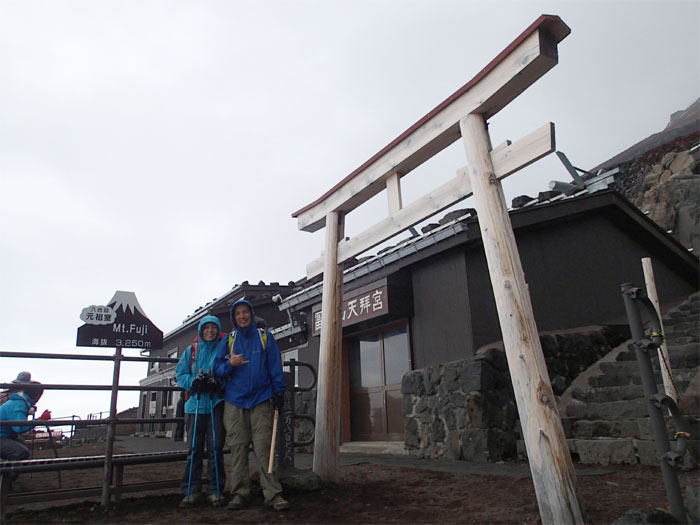
8th Station of the ascent of Mt Fuji, at the Ganso Muro hut where a small shrine has been erected. The steps to the right lead up to the spot where Jikigyo Miroku died. (photo by Kenji Saito)

Leave a Reply